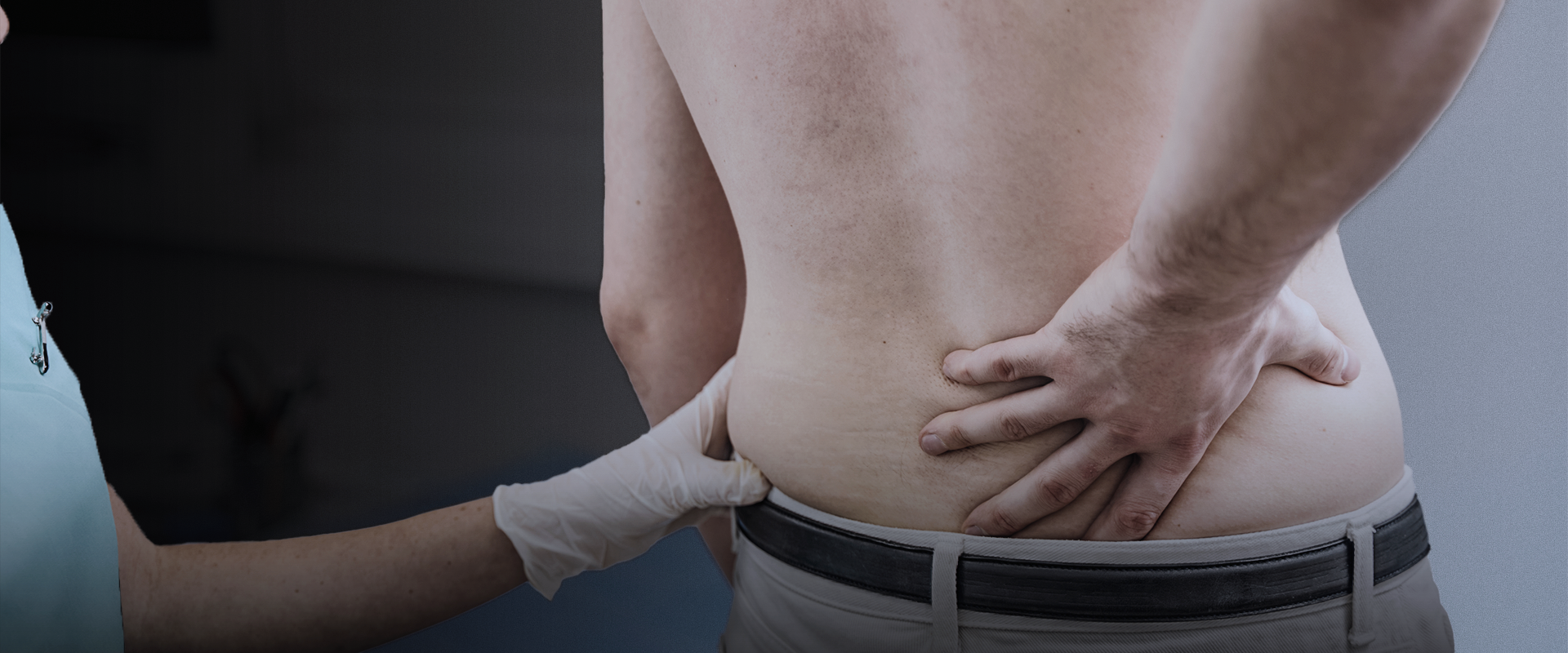
Physiotherapy sacroiliac joint pain
AT EVOLVE
Physiotherapy sacroiliac joint pain
HOW CAN PHYSICAL THERAPY ADDRESS SI JOINT PAIN?
Have you ever felt deep pain at the very base of your spine near the buttock? If you have, you may have experienced SI joint pain. The sacroiliac joints (SIJ) are the connections between your spine and pelvis via the sacral bone. Like other types of low back pain, SI joint pain can be uncomfortable and disruptive to your daily activities. Physical therapists are movement experts trained to evaluate and manage musculoskeletal conditions like pain in the SI joint. By addressing the root causes of pain, physical therapy can improve your symptoms and help you return to normal activities.
WHAT DOES PHYSICAL THERAPY TREATMENT FOR SI JOINT PAIN LOOK LIKE?
SIJ pain can have different causes. My team of physical therapists and I will target treatments toward the root cause of your pain. During your first visit, we will interview you about your pain symptoms as well as any other symptoms you are experiencing. It is also important for us to understand how these symptoms are impacting your functional activities. We will then perform a physical examination to locate the cause of your pain. Provocation tests are often used to test the SI joints. Reproduction of your symptoms during these tests help us confirm your symptoms are arising from the SIJ. We will also test the strength in nearby muscles, evaluate muscle length and flexibility, observe how you move and examine the SI joint, spine and pelvis.
Treatment for SIJ pain can include manual therapy techniques, muscle energy techniques, modalities and dry needling, strengthening, stabilization exercises, stretching and more.
HOW LONG WILL I NEED PHYSICAL THERAPY?
The duration of your physical therapy plan of care will vary depending on the severity of symptoms, how many impairments need to be addressed as well as the types of activities you aim to resume. Many symptoms like pain or inflammation begin to improve within a few weeks. Your physical therapist will work with you to determine how many weeks of therapy you will need, but treatment plans often begin with about four weeks of therapy and then increase depending on patient needs. Achieving long-lasting results may take some time, but dedication to your program will not only help you achieve these results but will help to decrease the likelihood of symptoms recurring in the future.
WHAT IS THE SI JOINT?
The sacroiliac joints are the connections between the sacrum at the base of the spine and the ilium bones of the pelvis. If you take both of your hands and place them on the narrowest part of your waist then slide them downward until they are resting on top of the large crest of bones that wrap from back to front, you have found your ilium bones. The pelvis which connects the spine and the legs is formed by two halves, each made up of three bones.
The sacrum itself is a flat, spade shaped bone near the base of the spine. It is positioned below the lumbar spine and above the coccyx. The sacrum is composed of five individual vertebrae that eventually fuse into a solid mass of bone beginning in the 2nd- 3rd decades of life. On occasion some people are born with six sacral vertebrae or only four. Many muscles cross from the bony sacrum to the pelvis and the femur bone of the thigh.
Where the flat sacral bone meets the ilium on either side is called the sacroiliac joint. The articulation is enclosed by a fibrous joint capsule and filled with a lubricating fluid called synovial fluid. Several ligaments span between the sacrum and the ilium further stabilizing the bony connections.
WHY IS THIS JOINT SO IMPORTANT?
Aside from acting as the only bony connection between the spine and pelvis, the SI joint’s main job is to stabilize this bony connection and to reduce the effect of forces traveling up the legs. While the joint is quite stable, it is capable of moving very small amounts as it absorbs the forces that travel up the legs toward the spine.
SACROILIAC JOINT PAIN
SI Joint Pain can have a few different causes:
- SI joint dysfunction
- Hypermobile SI joint (excess motion)
- Hypomobile (stiff) SI joint
- Slight mispositioning
- Sacroiliitis
- Inflammation of the SI joint
- Arthritis
- Pregnancy
- Pregnancy hormones can cause laxity and hypermobility in SIJ ligaments
- Trauma
- Pain that is sharp, stabbing or shooting
- Unilateral or bilateral buttock pain and/or midline lower spine pain
- Pain that radiates into the buttock and back of the thigh but not below the knee
- Local tenderness over the involved SI joint
- Prolonged standing
- Running
- Taking long strides
- Standing with more weight on one leg than the other
- Climbing stairs
- Lying on the side of pain
- Sitting too long
End Injury Progression
Physiotherapy sacroiliac joint pain has proven to prevent injury, slow and even stop pain issues, improve performance, and reverse injury progression in many cases.
Relieve Pain
The movements used in this technique can target your entire body helping you to manage discomfort and pain during the course of your physical therapy treatments.
Improve Range of Motion
Posture awareness is an important area to focus on due to the fact that certain positions may cause you further discomfort and pain.
Restore Mobility
You can regain mobility and flexibility by taking part in the stretches and exercises as prescribed by your physical therapist.
How Long Will Physiotherapy sacroiliac joint pain Last?
If you decide to work with a physical therapist to help correct your sacroiliac joint pain issues, your entire treatment plan could consist of around 8-20+ different physical therapy sessions that will each last 60-90 minutes. Once you complete your customized physical therapy treatment plan, you will be able to continue to do the prescribed stretches and exercises utilized during your PT sessions yet in the comfort of your own home.
PHYSICAL THERAPY FOR SI JOINT PAIN
Physical therapy is often a first line treatment for SI Joint pain. At times anti-inflammatory medications may be recommended by your doctor if acute inflammation is a primary contributor to your pain. Addressing the root cause is the main goal of physical therapy treatment to reduce pain and discomfort. When the root cause cannot be fixed such as when pain is caused by arthritis, your PT will work to minimize symptoms by addressing other factors that may contribute to pain. Common treatments for SIJ pain include:
- Modalities like heat or cold to minimize SIJ inflammation
- An SIJ belt may be prescribed in the acute phases to reduce inflammation and pain
- Exercises to maximize the strength of the glute and core muscles to support the SI joint
- Low back muscle control and stabilization exercises integrated into dynamic tasks
- Lumbar and SI joint manipulation and mobilization techniques
- Stretching to address shortened muscles
Mill Basin (located in Harbor Fitness)
6161 Strickland Ave
Brooklyn, NY 11234
Monday: 7am-8pm
Tuesday: 7am-8pm
Wednesday: 8am-5pm
Thursday: 7am-8pm
Friday: 8am-1pm
Park Slope (located in Harbor Fitness)
550 5th Ave.
Brooklyn, NY 11215
Monday: 9am-8pm
Tuesday: 8am-6pm
Wednesday: 9am-8pm
Thursday: 8am-6pm
Friday: 8am-3pm
Gravesend
372 Avenue U
Brooklyn, NY 11223
Monday-Thursday: 8am-8pm
Friday: 8am-3pm
Kings Highway
945 Kings Highway
Brooklyn, NY 11223
Monday-Wed.: 12pm-8pm
Ready to take the next step to a healthier you?
Contact Us Today!
PHYSIOTHERAPY FOR SACROILIAC JOINT PAIN
Need physiotherapy for sacroiliac joint pain ?
Let our caring and compassionate physical therapists help you with relieving pain while getting you back on your feet comfortably.
Call now to schedule your first PT consultation free of charge.
Call: 1-718-751-0741







